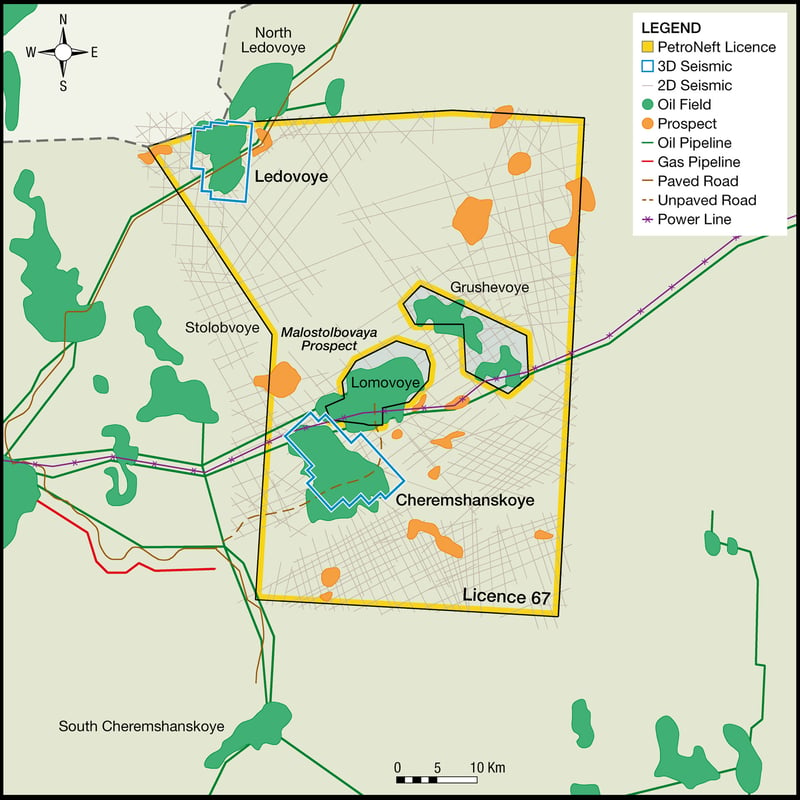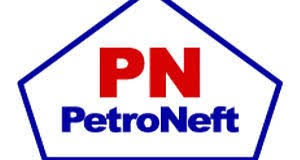PetroNeft Resources plc (LON:PTR) Chief Executive Officer David Sturt caught up with DirectorsTalk to discuss the operational success of the Cheremshanskoye road, results from the C-4 well, the importance of the workover of the L-2a well and more news flow to look forward to.
Q1: Now, a number of points in today’s update with the first being the operational success of the road being built ahead of time and within budget. David, can you talk us through the importance of the road, which has just been completed along with the results from the C4 well?
A1: It’s certainly been a busy time in Tomsk and I think it’s a credit to the success we’ve been having in the various press releases, including today’s is a tantamount to the success of our team we put in place in Tomsk.
When we look at license 67, and particularly the Cheremshanskoye field, we’ve just completed an all-season road which is vital, it connects up across the fields to a further all-seasons road that’s already in place.
Now, it achieves two major objectives, firstly, it enables us to have the field in production all-year round, in West Siberia, you have the very cold spell in winter when you build ice roads and that’s the way to transport in and out. These all season roads mean we can access the fields all year round, we are already using that road to transport oil out now because the winter roads have melted away so we’re getting oil out of the field all year round but in addition, this road provides a major archery across the field. That enables us to get personnel equipment, in and out at any time of the day we want so that feeds through to improved operating costs and even capital costs because traditionally in some remote fields in Siberia, people can use helicopters, the helicopter is expensive and obviously there’s weight restrictions so it gives us an important revenue stream from the fields as we export oil all-year round. It also provides a great archery into the field as and when we want to use it.
I think the important thing is that the team delivered this on budget and within schedule so another success.
Now, turning to the C4 well, the C4 well is one well drilled under significant structure, Cheremshanskoye field covers an area of 46 square kilometres, and the C4 well was drilled back at the end of 2018. It was the first well to be drilled on 3D seismic and we did an extended test last year, we basically put the well into production this year.
What we did is we took a very careful approach as it was the first well on production in the field so we wants to be very cautious with it and learn as we go along. We opened it up very slowly from a two-millimetre to four to six and eight, and then from mid-March, we’ve had it on an eight millimetre choke and basically, the well is produced extremely well. It’s produced at a very stable 300 barrels of oil a day without any decline up to now and that’s great news.
The important thing is that the fact we’ve got no decline, we’re looking at other ways we may actually try and achieve a higher production rate from that well, and these may involve things such as putting a pump down the well because at the moment it’s actually just flowing naturally, or it may involve even opening the choke size up a little bit more. We’re going to be doing that sort of evaluation over the next month or so.
I think the key thing about this oil and these well, it’s not just about the production, obviously we’re very pleased with the results so far, they’ve exceeded expectations, but it’s also about the value of every barrel we get out of the ground from this field. There’s two things that make this extremely attractive to us and that’s really what pushed us into increasing our equity in this license back at the end of 2020 and into 2021 when we increased our equity from 50% to 90%.
Those two aspects are we have a contract in place to sell the oil at the wellhead at competitive rates, the important thing about it is that the custody transfer is at the wellhead so basically it moves any expensive pipeline tariffs we normally have to pay in some fields. It incrementally becomes more valuable.
On top of that, we have a reduction in the mineral extraction tax that, for April, equates to $4.20 per barrel so we’re doing 300 barrels a day, with a $4.20 incremental uplift in value, it’s $36,000/$38,000 a month more. You can soon see how that multiplies up over a year and then as you look at developing more wells, you can see how the value of incremental becomes more and more important so it’s very valuable oil.
In addition to looking at increasing or looking to increase production from this well, we’re also, on the back of the success we’ve had with this field so far, looking at further development because clearly there’s a significant amount of potential in this field. It’s all about how we go about further development, whether it’s horizontal wells, slant wells, directional, we’re doing a lot of that work at the moment to look at further development options but, so far, it’s going extremely well.
Q2: You’re also about to start with a workover of the L-2a well, how important is that for the company?
A2: The L-2a well is actually located on the northern margin of a license 67 and it’s actually a field, it’s called Ledovoye field, there was a couple of wells drilled on the structure back in the Soviet year, in 1973/74, one tested oil for short time at very high rates, that was the L-2a well and the L-5 well, it had oil shows and interpreted oil well logs .
In 2011, we went in and drill a well that twinned the old, what’s called, the L-2 well and we tested oil in an open hole test, it was a quick open hole test on a small choke size, recovered oil to surface, but the problem was the well was never of a cased. What casing is, you basically put the steel sleeve down the well, then you cement in and perforate into formation and that was never done. The trouble with that is that the regulation system requires you to do a cased hole tests to be able to get the state reserves booked on the state register, once you have that booked, you can then go forward to forward development.
So, we want to do two things with this workover of our 2011 well. Firstly, go into the well, properly put a liner down and cement it, and then reperforate, there’s actually two horizons – the J1-1 and the J1-2 – perforate and hopefully establish a production to surface. On getting any production surface, it will achieve two things, firstly, we can produce that well for up to three months and while we produce, we can export the oil, and we’re very lucky because this field is right next to a very good quality all-season tarmac road. So, the wells are only 200 metres away from that road so we can easily get the oil out. Secondly, and even more importantly, once we established flow or established production in the event we do, we can then go and seek what’s called a State Reserves Report, which will then enable us to develop the field going forward. That’ll take probably five to six months after getting a flow but clearly it will transform an asset which is regarded as an exploration asset, despite the fact is actually produced oil in the past to surface on test, to an asset for forward development.
The other thing just to mention is that this field where the L-2a well is located, Ledovoye field, there’s actually extension of that into the adjacent license to north, license 55, into a field called North Ledovoye, which was actually developed previously by MOL. So, it’s a workover with significant upside on success, and we’re looking forward to results.
Now, in terms of timing, we’ve got mobilized the workover rig to the well site, we’re busy what you call rigging up the workover rig and we’d expect initial results before the end of Q2 this year.
Q3: Like I mentioned earlier, so far in 2021, we’ve seen quite a lot of news flow from PetroNeft Resources, do you think we’ll have more to look forward to?
A3: Yes, good question. We’ve had a lot of, I think, operational success so far this year and a lot of news flow and things are all going in the right direction and it’s very pleasing to see that our share price is starting to reflect that as well.
I think the answer to the question is that we do anticipate news flow on both licenses going forward, we should not forget the success we’ve had on license 61, particularly with the fracking program, which is still going, the results are still looking very positive. This new flow hasn’t just happened overnight, the turnaround we’re seeing has been built on a solid foundation that basically went back as far as 2019 and that was basically, we developed a kind of an emphasis.
Firstly, the key principles where we wanted to maximize our understanding of the subsurface assets so basically placing an increased emphasis on what we call geology and geophysics so getting a clearer picture of the fields themselves. Then we wanted to obviously have a rigorous approach to cost control at all levels, not just in the field but also at the corporate level and that’s been reflected on numbers previously. Then crucially, building the right team to manage our assets so in Tomsk, we’ve had quite a lot of new faces and a lot of these people, some we know and some are new, they’ve had a lot of experience of working on similar assets in the region and I think it’s not surprising that you to see the benefits coming forward.
The key differentiator really, when you look at the past and where we are now, is all this improved subsurface understanding, the better team, more vigorous cost control, it gives you much better clarity of thought process on your capital allocation model. We believe we have a much better understanding the risk, we don’t take unnecessary risks, we take a cautious measured approach and clearly trying to continue to improve our success.
So far this winter’s operational programme has delivered, we believe, great success, and we continue to look forward to further news, just at the time when we actually increased the equity of our licence as well. So, in a nutshell, we do anticipate further news flow going forward through the year.











